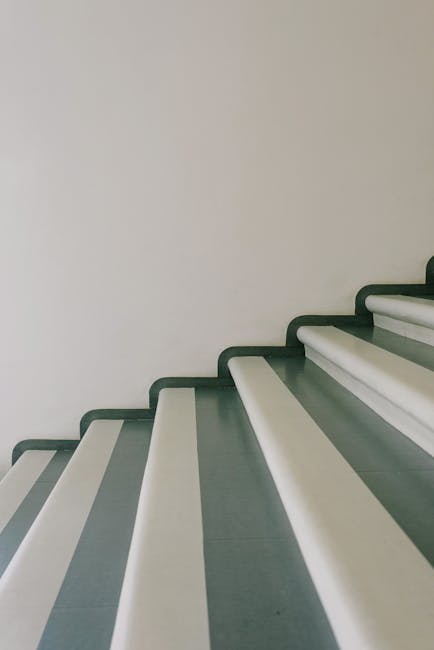Finding Ways To Keep Up With
 The Art of Stair Building: A Guide to Creating Stunning Staircases in Tampa, FL
The Art of Stair Building: A Guide to Creating Stunning Staircases in Tampa, FL
When it comes to designing and building a staircase, it’s essential to consider both form and function. A well-crafted staircase can be a stunning focal point in any room, while also providing a safe and efficient means of navigating between floors. In Tampa, FL, where architecture and design are highly valued, a beautifully built staircase can elevate the entire aesthetic of a property. In this article, we’ll delve into the world of stair building, exploring the key considerations, materials, and techniques that will help you create a stunning staircase in Tampa, FL.
1. Planning and Design
Before breaking ground, it’s crucial to plan and design your staircase carefully. This involves considering the purpose of the staircase, the layout of the surrounding space, and the architectural style of your property. You’ll need to decide on the type of staircase you want, including the number of steps, the width and depth of the treads, and the type of railing or balustrade. It’s also essential to consider the structural integrity of the staircase, ensuring that it can support the weight of users and withstand the forces of gravity.
2. Materials and Construction
When it comes to building a staircase, the choice of materials is critical. You’ll need to select materials that are durable, attractive, and safe. Common materials used in stair building include wood, metal, and glass. Wood is a popular choice due to its natural beauty and versatility, while metal and glass can add a sleek, modern touch. The construction process typically involves building the staircase frame, installing the treads and risers, and adding the railing or balustrade.
3. Types of Staircases
There are several types of staircases to choose from, each with its own unique characteristics and advantages. The most common types include:
* Straight staircases: These are the most straightforward type of staircase, featuring a single flight of steps that rise directly to the next floor.
* L-shaped staircases: These staircases feature a 90-degree turn, providing a more compact and efficient use of space.
* U-shaped staircases: These staircases feature a 180-degree turn, creating a sense of grandeur and drama.
* Spiral staircases: These staircases feature a continuous spiral shape, providing a unique and eye-catching design element.
4. Safety Considerations
Safety should always be the top priority when building a staircase. You’ll need to ensure that the staircase is designed and constructed to meet local building codes and regulations. This includes factors such as:
* Handrail height and spacing: The handrail should be at least 34 inches high and spaced no more than 4 inches apart.
* Step depth and width: The steps should be at least 11 inches deep and 36 inches wide.
* Railing and balustrade: The railing or balustrade should be sturdy and securely attached to the staircase frame.
5. Customization and Design
One of the greatest benefits of building a custom staircase is the ability to tailor it to your unique needs and preferences. You can choose from a wide range of materials, designs, and features to create a staircase that reflects your personal style and complements your property. This might include adding decorative elements such as newel posts, balusters, or ornate railings.
6. Budget and Cost
Building a staircase can be a significant investment, and it’s essential to factor in the cost when planning your project. The cost of a staircase will depend on a variety of factors, including the type of materials used, the complexity of the design, and the labor costs involved. On average, a custom staircase can cost anywhere from $5,000 to $20,000 or more.
7. Hiring a Professional
While it’s possible to build a staircase yourself, it’s often recommended to hire a professional stair builder or contractor. A professional will have the necessary expertise, experience, and equipment to ensure that your staircase is built to code and meets your specific needs and preferences. They will also be able to provide guidance on the design and construction process, helping you to make informed decisions throughout the project.
8. Maintenance and Repair
Once your staircase is complete, it’s essential to maintain and repair it regularly to ensure its safety and longevity. This might involve cleaning and polishing the handrail and balusters, replacing worn-out treads and risers, and addressing any structural issues that may arise over time.
9. Conclusion
Building a staircase is a complex and multifaceted process that requires careful planning, design, and construction. By considering the key factors outlined in this article, you can create a stunning and functional staircase that enhances the beauty and functionality of your property. Whether you’re building a custom staircase or renovating an existing one, the end result will be a beautiful and functional space that you’ll enjoy for years to come.
This post topic: Foods & Culinary